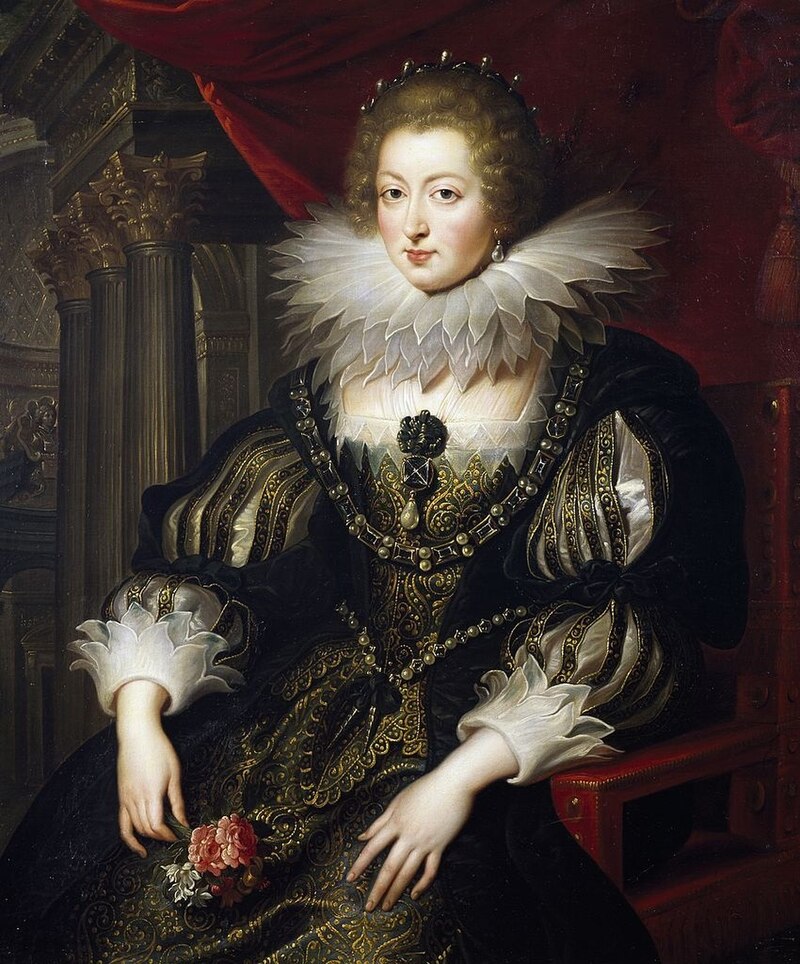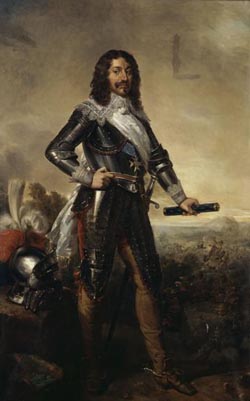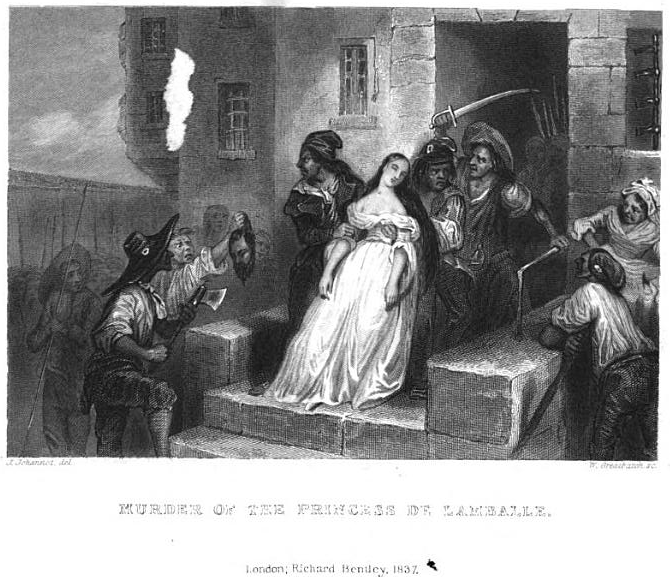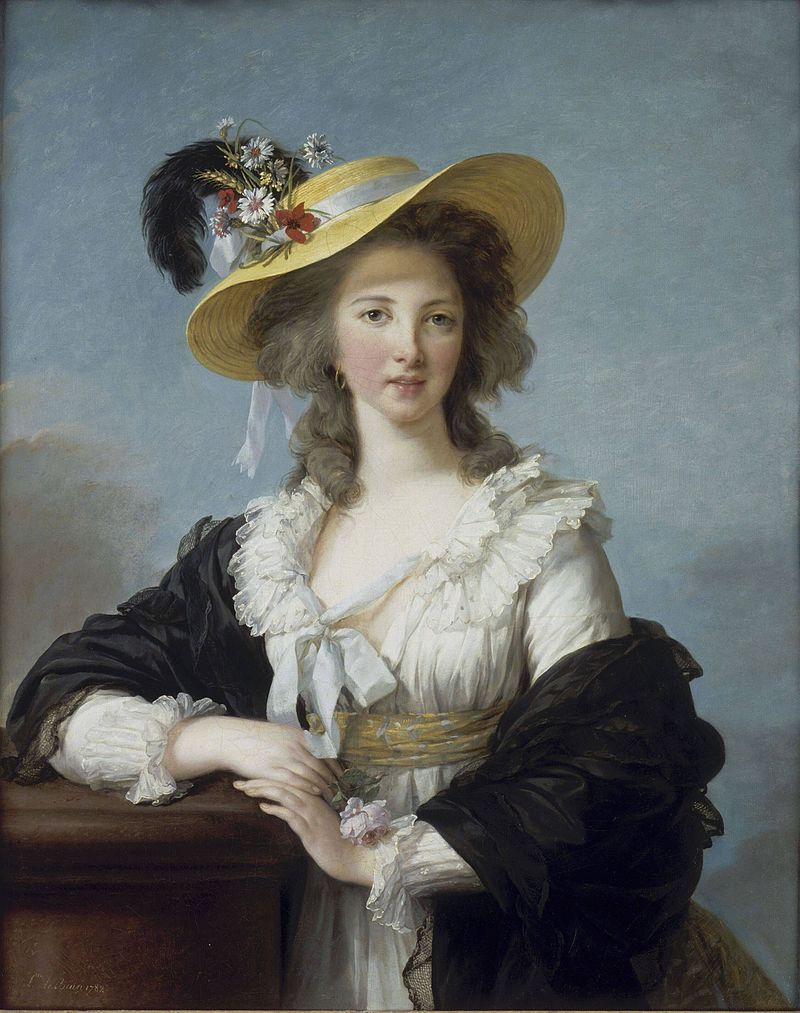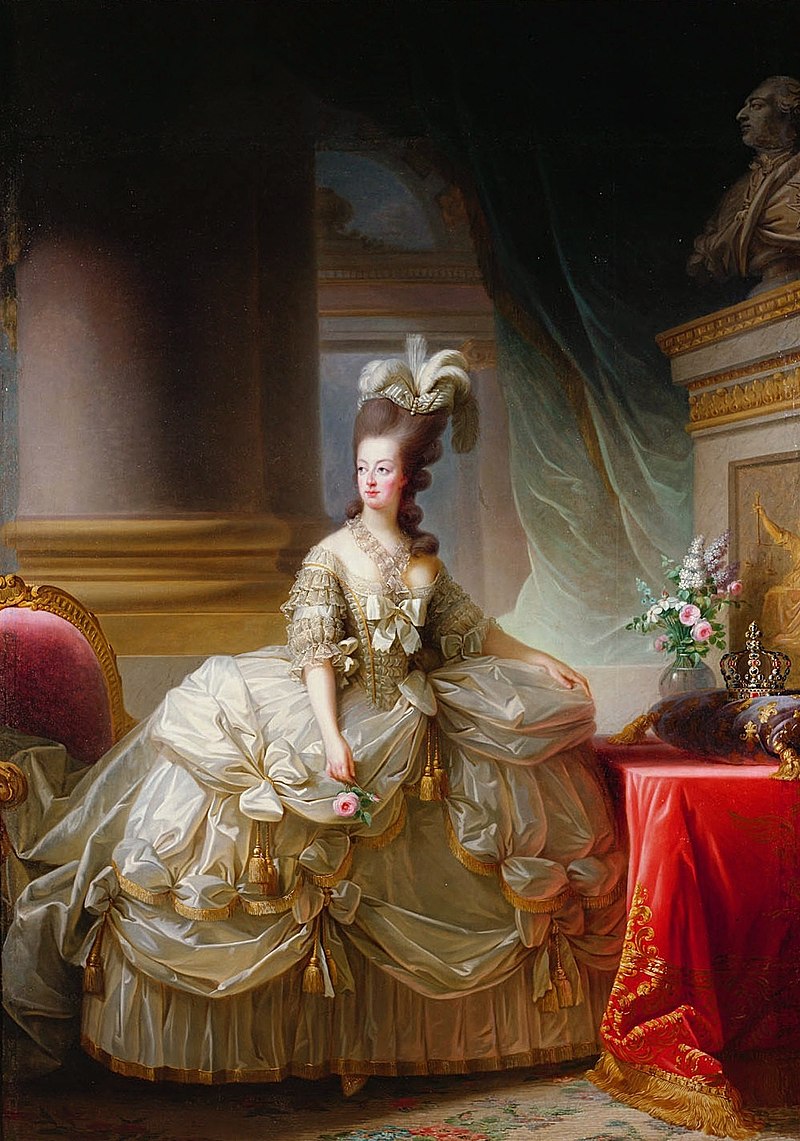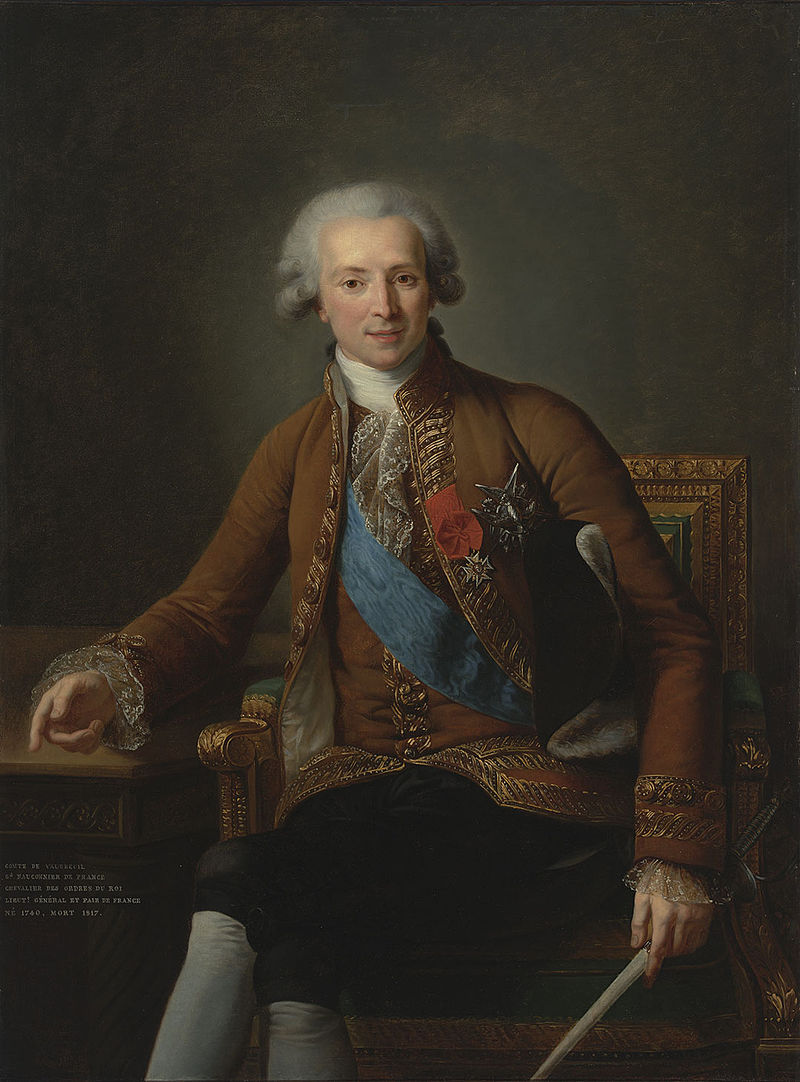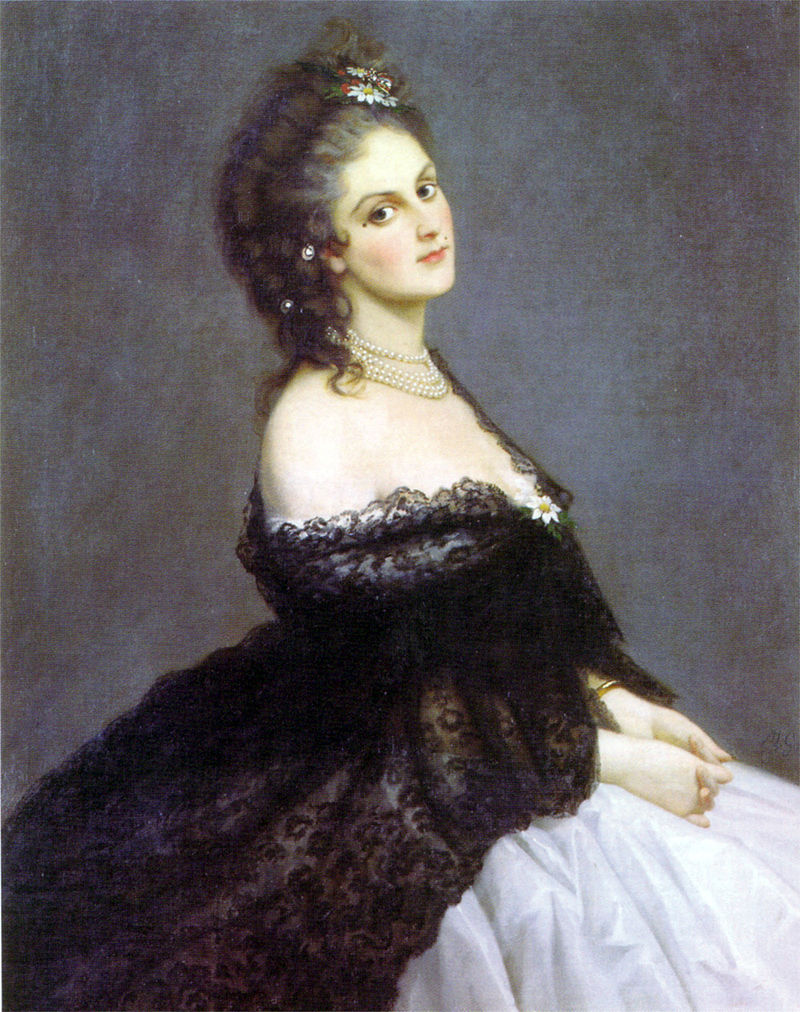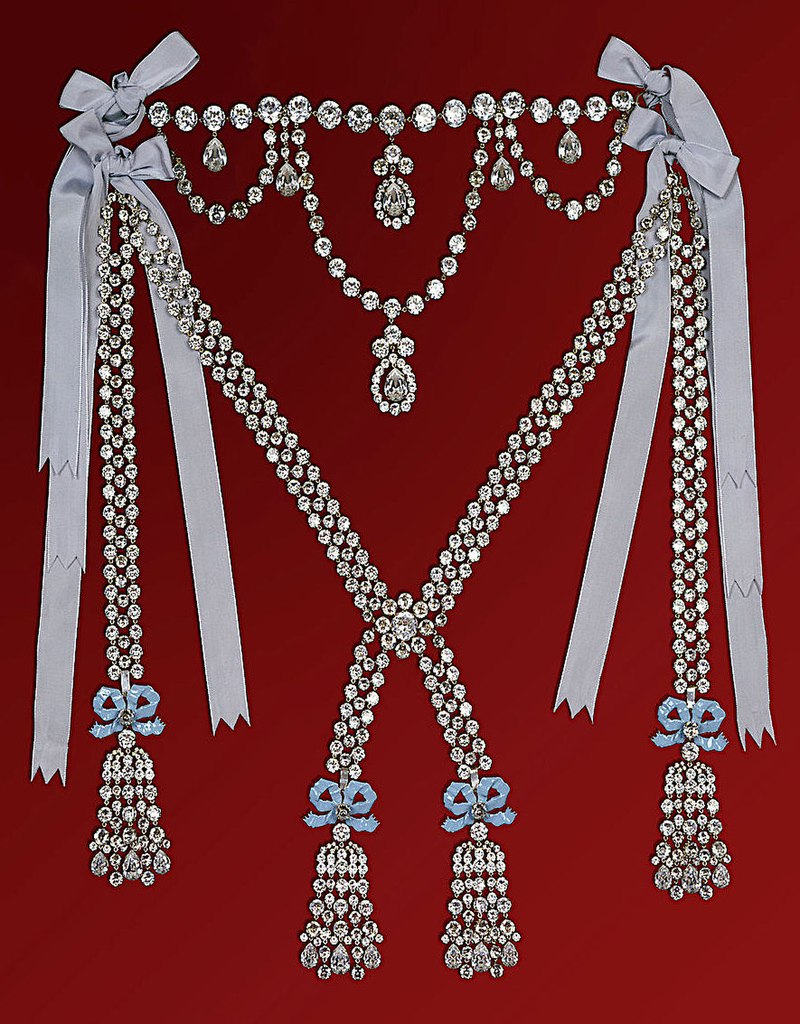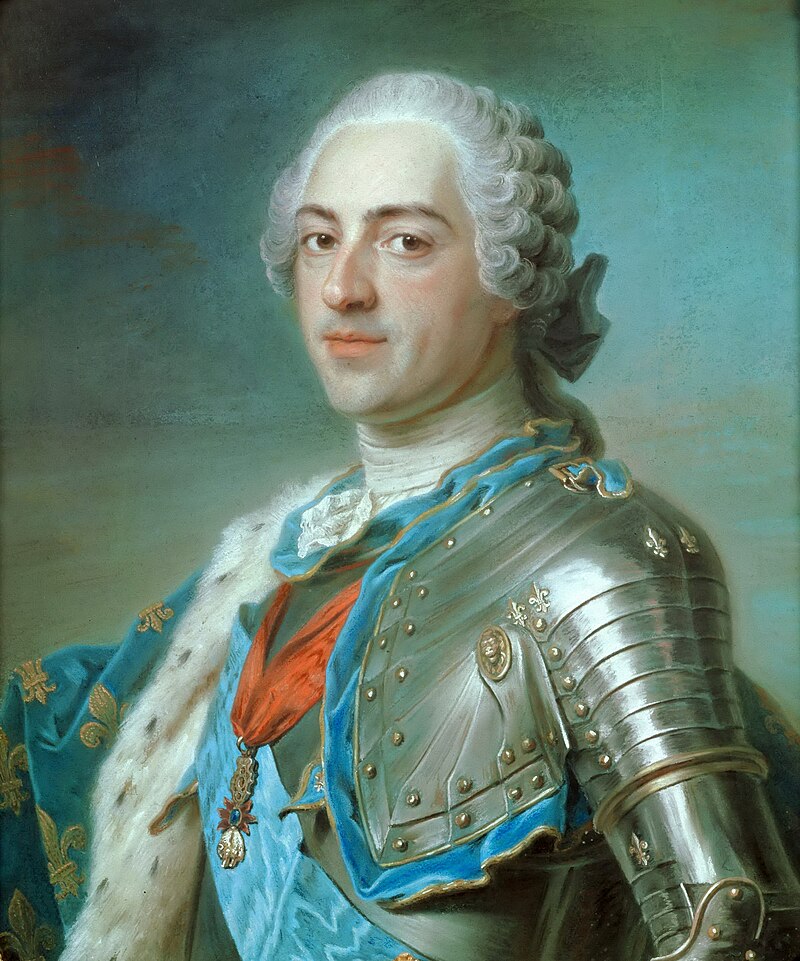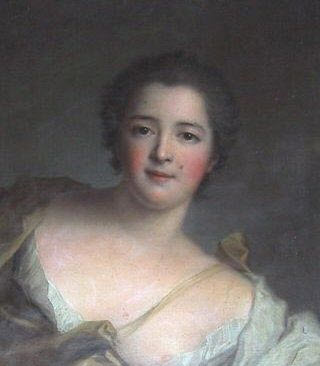by Susan Flantzer © Unofficial Royalty 2020
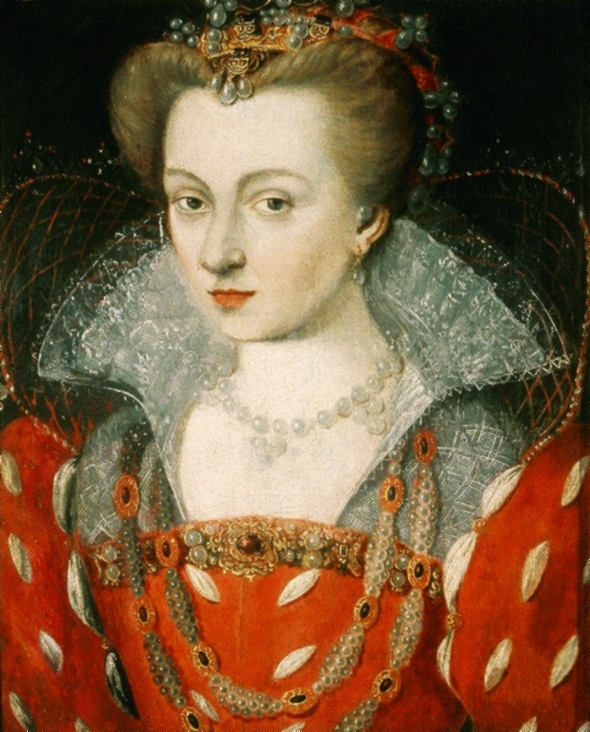
Louise of Lorraine-Vaudémont, Queen of France; Credit – Wikipedia
Louise of Lorraine-Vaudémont was the wife of Henri III, King of France. Born on April 30, 1553, at the Château de Nomeny in Nomeny, Duchy of Bar, now in France, Louise was the third of the three daughters and the youngest of the four children of Nicolas of Lorraine, Count of Vaudémont and Duke of Mercœur and his first wife Marguerite d’Egmont. Louise’s father was the second son of Antoine, Duke of Lorraine and Renée de Bourbon. Her mother was the daughter of daughter of Count Jean IV of Egmont and Françoise of Luxembourg.
Louise had three elder siblings who all died in infancy:
- Marguerite (born 1550)
- Catherine (born 1551)
- Henri, Count of Chaligny (born 1552)
Shortly before Louise’s first birthday, her mother died on March 10, 1554. In 1555, Louise’s father made a second marriage to Jeanne of Savoy-Nemours, daughter of Philippe, Duke of Nemours and Charlotte d’Orléans-Longueville.
From her father’s second marriage to Jeanne of Savoy-Nemours, Louise had six half-siblings:
- Philippe Emmanuel of Lorraine, Duke of Mercœur (1558 – 1602), married Marie de Luxembourg, Duchesse de Penthièvre, had one son and one daughter
- Charles of Lorraine, Cardinal de Vaudémont, Bishop of Toul and of Verdun (1561 – 1587)
- Jean of Lorraine (born 1563), died young
- Marguerite of Lorraine (1564 – 1625), married (1) Anne de Batarnay de Joyeuse, Duke of Joyeuse, no children (2) François of Luxemburg, Duke of Piney
- Claude of Lorraine (born 1566), died young
- François of Lorraine, Marquis of Chaussin (1567 – 1596), unmarried
Louise’s stepmother Jeanne of Savoy-Nemours was attentive to her and ensured she received a solid classical education. However, Jeanne did not live long enough to see her stepdaughter become Queen of France as she died at the Château de Nomeny in 1568. In 1569, Louise’s father made a third marriage to Catherine of Lorraine-Aumale, daughter of Claude II of Lorraine, Duke of d’Aumale and Louise de Brézé.
From her father’s third marriage to Catherine of Lorraine-Aumale, Louise had five half-siblings:
Catherine of Lorraine-Aumale, Louise’s second stepmother, was nineteen years old, only three years older than Louise, when she married Louise’s 45-year-old father. Catherine may have been frustrated that she had to marry a man twenty-six years older than her and leave the French court for the small town of Nomeny. She acted cruelly toward Louise and the children of her husband’s second marriage which may have been the result of her frustration.

Louise’s husband Henri III, King of France; Credit – Wikipedia
In 1573, Polish nobles chose Henri, Duke of Anjou, the son of Henri II, King of France and Catherine de’Medici, as the first elected monarch of the Polish-Lithuanian Commonwealth. Henri, Duke of Anjou’s father had died as a result of a jousting accident, and his brother François II, King of France, had died from an abscess. At this time, Henri, Duke of Anjou’s brother Charles IX sat upon the throne of France and his only child was a daughter who could not succeed her father. Therefore, Henri, Duke of Anjou was the heir presumptive to the French throne.
On his way to Krakow, the capital of his new kingdom, Henri was welcomed in Nancy in the Duchy of Lorraine by his brother-in-law and his sister, Charles III, Duke of Lorraine and Claude of Valois, Duchess of Lorraine. All members of the House of Lorraine were invited to welcome Henri and participate in the celebrations and so Louise and her family attended the celebrations. A beautiful, tall, blonde 20-year-old young woman, Louise of Lorraine, caught Henri’s attention and she stayed in his mind.
In 1574, 23-year-old Charles IX, King of France died from tuberculosis without a male heir and so his brother Henri, Duke of Anjou succeeded him as Henri III, King of France. In mid-June 1574, upon learning of the death of his brother, Henri secretly left Poland and headed back to France. Because he did not return to Poland, the Polish Parliament declared the throne vacant. Henri did not regret this because as King of France, he would have more power.
Once in France, 23-year-old Henri III knew he must provide an heir to the throne. Henri III had an unrequited love for Marie of Cleves, the wife of Henri of Bourbon, Prince of Condé. He planned to obtain an annulment of Marie’s marriage and then marry her himself but Marie died before he could implement his plan. Catherine de Medici wanted her son to marry a foreign princess and Henri III wanted to cut short the matrimonial machinations of his mother. He remembered Louise of Lorriane-Vaudémont, the girl he met passing through Lorraine who resembled his lost love Marie of Cleves, and decided to marry her.

Queen Louise of France; Credit – Wikipedia
In January 1575, Henri III sent emissaries to Louise’s father to ask for her hand in marriage. At that time, Louise was away on a pilgrimage and her father agreed to the marriage without consulting her. Upon her return from the pilgrimage, Louise was in disbelief when told she was to marry the King of France. Henri’s choice of a bride from a relatively modest noble family also surprised the French court and many people in the Kingdom of France, including Henri’s mother. Henri decided to combine his coronation and his wedding. Henri was crowned King of France at the Cathedral of Reims on February 13, 1575. Two days later Louise and Henri were married at the Cathedral of Reims by Charles, Cardinal de Bourbon.
Louise suffered a miscarriage with complications in May 1575 and she never had children. However, Louise and Henri did not give up on having children. They went on many pilgrimages and took thermal cures hoping to have an heir. Despite Henri’s affairs, Louise and Henri both loved each other and Louise did an admirable job with her duties as Queen of France.
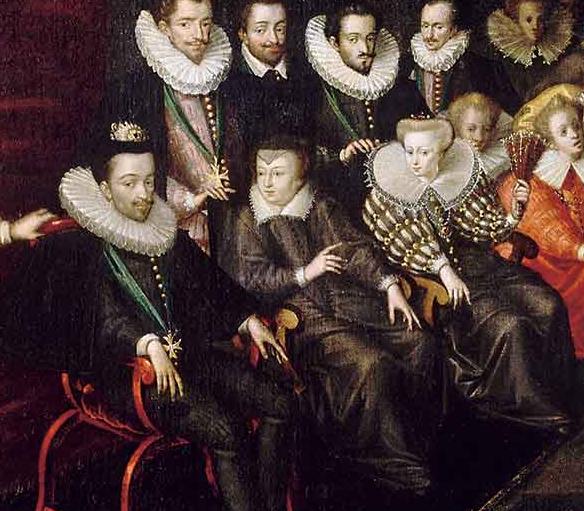
Seated, left to right: Henri III, his mother Catherine de Medici, and his wife Louise; Credit – Wikipedia
During the reigns of his brothers, Henri had been a Catholic military leader in the French Wars of Religion – Catholics against the Protestant Huguenots – and helped plot the St. Bartholomew’s Day Massacre of August 23-24, 1572 in which 5,000 to 30,000 Protestant Huguenots were killed. The reigns of Henri and his two brothers saw France in constant turmoil over religion.
In 1584, Henri’s youngest brother and heir presumptive Hercule François, Duke of Anjou died. The Protestant Huguenot King Henri III of Navarre, who was married to King Henri III of France’s sister Margeurite, was the most senior agnatic descendant of King Louis IX, and therefore the rightful heir to the French throne. This led to what was known as the War of the Three Henris – King Henri III of Navarre, King Henri III of France, and Henri I, Duke of Guise. The Duke of Guise was a staunch opponent of the Huguenots and had founded the Catholic League to fight against the possibility of Henri of Navarre succeeding to the French throne.
In 1588, Henri III of France had Henri I, Duke of Guise assassinated by “the Forty-Five,” the king’s bodyguard, as Henri III of France looked on. The day after, the Duke of Guise’s brother Louis of Lorraine, Cardinal of Guise was assassinated on Henri III’s orders. Henri III hoped that getting rid of the Guises would restore his authority with the French people. Instead, it caused an outrage among the relatives and allies of the Guises and much of France that Henri III of France was forced to take refuge with Henri of Navarre. The two Henris were joined in their desire to defeat the Catholic League which had taken control of much of the country.

Jacques Clément assassinating Henri III; Credit – Wikipedia
Jacques Clément was a fanatic Dominican monk who sided with the Catholic League. He planned to kill King Henri III of France who he believed to be the enemy of Catholicism since the Duke of Guise’s assassination. On August 1, 1589, Henri III of France was with his army at Saint-Cloud, preparing to attack Paris. Jacques Clément, carrying false papers, was granted access to deliver important documents to Henri III. After giving Henri III some documents, Clément told Henri that he had a secret message for him. Henri III asked his attendants to step back to give him privacy. Clément whispered in Henri’s ear while stabbing him in the abdomen. Henri’s guards immediately killed Clément. After a day of agony, 37-year-old King Henri III of France died on August 2, 1589, at the Château de Saint-Cloud near Paris. Henri III of Navarre succeeded him as King Henri IV of France, the first of the kings of the House of Bourbon. Ironically, Henri IV was also assassinated by a Catholic zealot in 1610.
After the assassination of Henri III in 1589, Louise became permanently depressed, always dressed in white, the traditional mourning color of French queens, and was nicknamed the “White Queen.” She lived in the Loire Valley of France at the Château de Chenonceau which she received as an inheritance from her mother-in-law Catherine de’Medici. The walls of her bed-chamber were all black and the décor were all symbols of mourning. She worked to rehabilitate the memory of her husband, who had been excommunicated after the assassination of the Cardinal of Guise. On January 29, 1601, Louise died at the Château de Moulins at the age of 47.

Rediscovery of the coffin of Queen Louise at the Capuchin Poor Clares convent, Paris in 1806; Credit – Wikipedia
Louise’s remains have rested in several places. The order of Capuchin Poor Clares was introduced in France by Louise. In her will, she left instructions and funds for her half-brother Philippe Emmanuel of Lorraine to build a convent in Bourges in the French Loire Valley that would be her burial site but he died soon after Louise. Eventually, a Capuchin Poor Clares convent was built with the funds but in Paris, instead of in Bourges, and Louise’s remains were buried there in 1605. The Capuchin Poor Clares convent then occupied half of the current Place Vendôme. During the French Revolution, the nuns of the convent were driven out. In the early 1800s, the Rue de la Paix was constructed in the area of the convent, requiring its destruction. In 1806, Louise’s tomb was discovered during the destruction of the convent and her remains were buried at the Père-Lachaise Cemetery in Paris. On January 16, 1817, her remains were transferred to her final resting place, in the crypt at the Basilica of Saint-Denis, the traditional burial place of the French royal family.

Louise’s tomb at the Basilica of Saint-Denis; Credit – Wikipedia
This article is the intellectual property of Unofficial Royalty and is NOT TO BE COPIED, EDITED, OR POSTED IN ANY FORM ON ANOTHER WEBSITE under any circumstances. It is permissible to use a link that directs to Unofficial Royalty.
France Resources at Unofficial Royalty
Works Cited
- En.wikipedia.org. (2020). Henry III of France. [online] Available at: https://en.wikipedia.org/wiki/Henry_III_of_France [Accessed 20 Jun. 2020].
- En.wikipedia.org. 2020. Louise Of Lorraine. [online] Available at: <https://en.wikipedia.org/wiki/Louise_of_Lorraine> [Accessed 21 June 2020].
- En.wikipedia.org. 2020. Nicolas, Duke Of Mercœur. [online] Available at: <https://en.wikipedia.org/wiki/Nicholas,_Duke_of_Merc%C5%93ur> [Accessed 21 June 2020].
- Flantzer, Susan, 2020. King Henri III Of France. [online] Unofficial Royalty. Available at: <https://www.unofficialroyalty.com/king-henri-iii-of-france/> [Accessed 21 June 2020].
- Fr.wikipedia.org. (2020). Assassinat d’Henri III. [online] Available at: https://fr.wikipedia.org/wiki/Assassinat_d%27Henri_III [Accessed 20 Jun. 2020].
- Fr.wikipedia.org. (2020). Henri III (roi de France). [online] Available at: https://fr.wikipedia.org/wiki/Henri_III_(roi_de_France) [Accessed 20 Jun. 2020].
- Fr.wikipedia.org. 2020. Louise De Lorraine-Vaudémont. [online] Available at: <https://fr.wikipedia.org/wiki/Louise_de_Lorraine-Vaud%C3%A9mont> [Accessed 21 June 2020].
- Fr.wikipedia.org. 2020. Rue De La Paix (Paris). [online] Available at: <https://fr.wikipedia.org/wiki/Rue_de_la_Paix_(Paris)#Couvent_des_Capucines> [Accessed 21 June 2020].
- Mehl, Scott. (2016). King Henri IV of France. [online] Unofficial Royalty. Available at: https://www.unofficialroyalty.com/king-henri-iv-of-france/ [Accessed 20 Jun. 2020].

